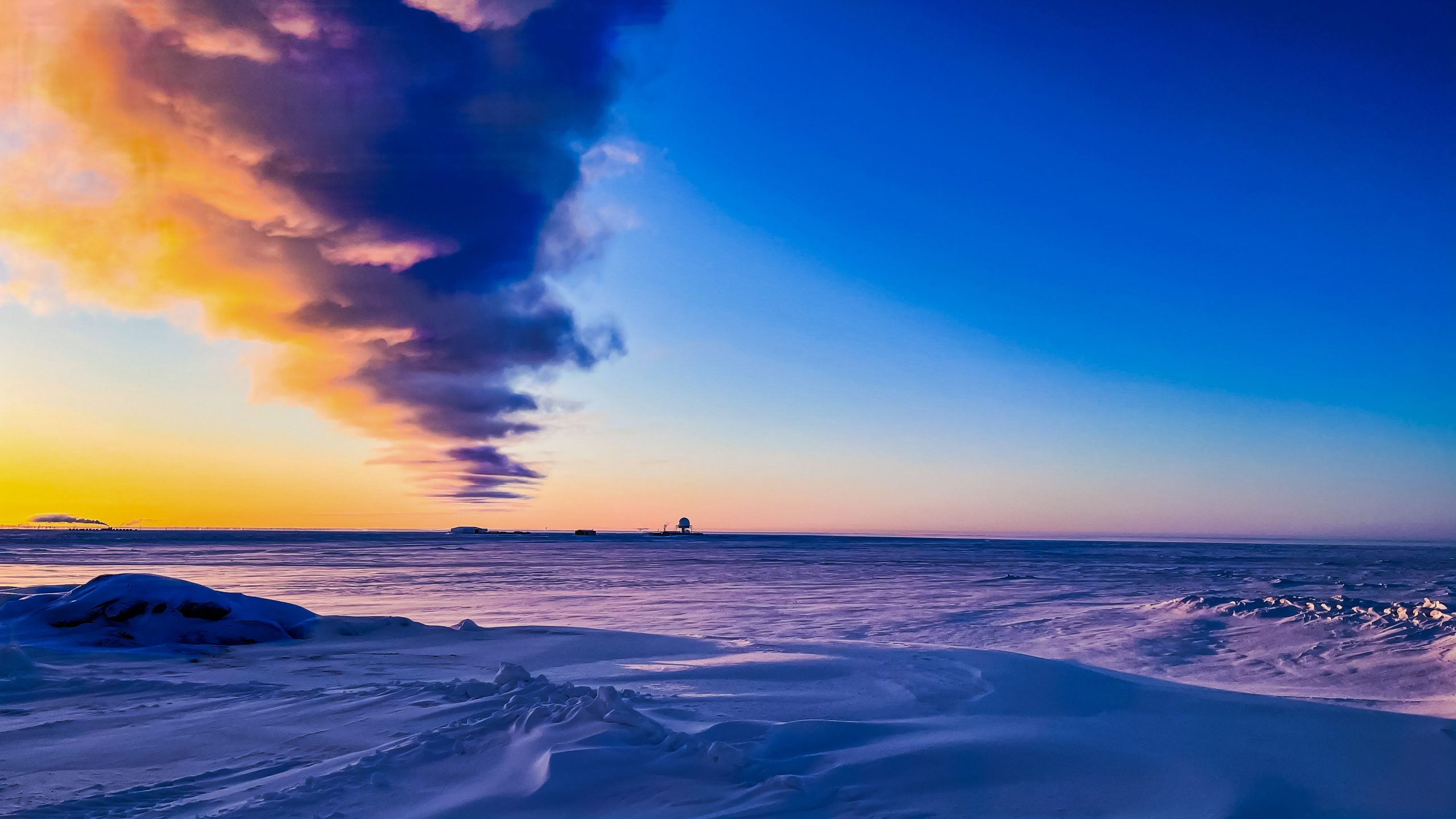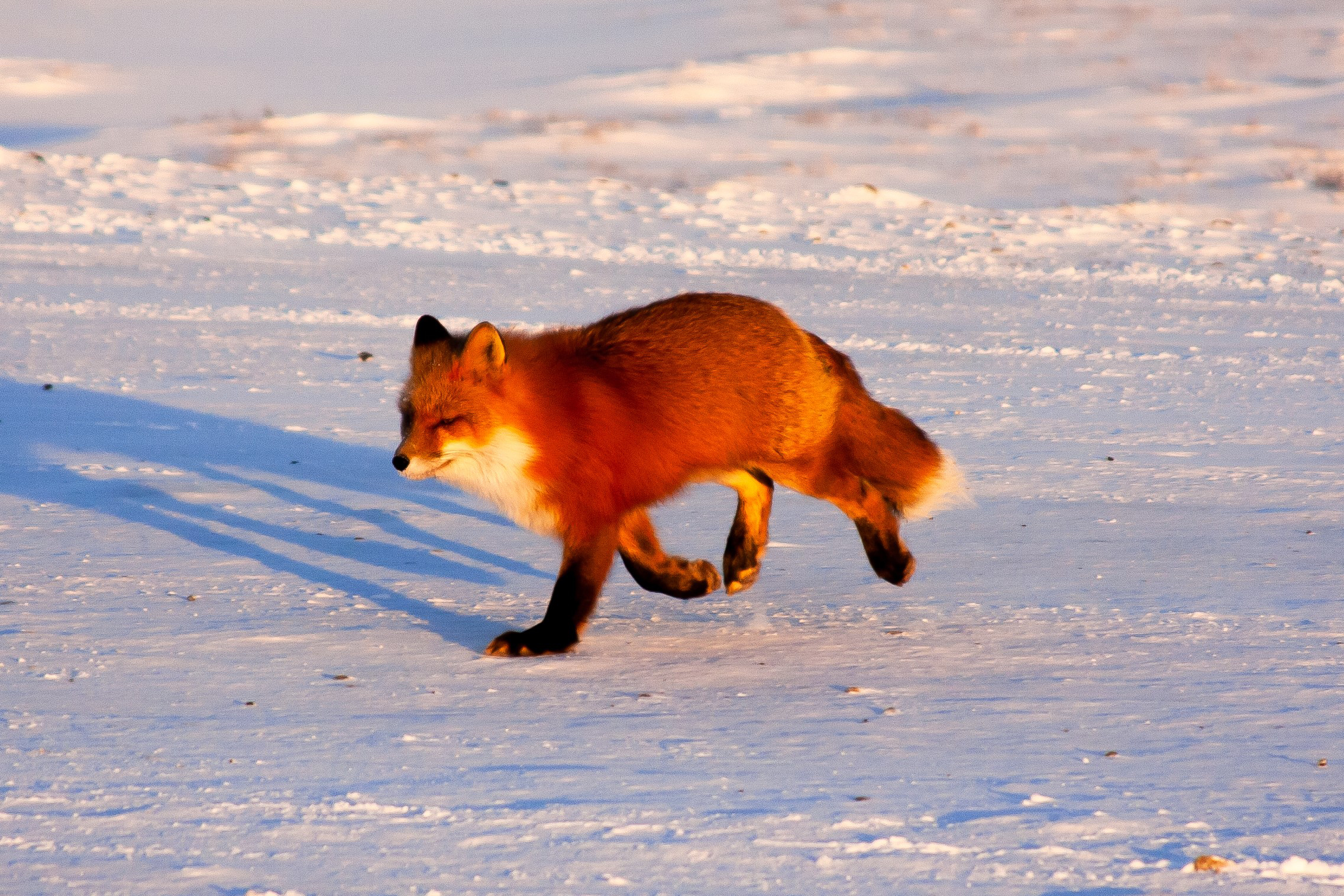ALBUQUERQUE, N.M. — Sandia National Laboratories researchers are beginning to analyze the first seafloor dataset from under Arctic sea ice using a novel method. They were able to capture ice quakes and transportation activities on the North Slope of Alaska while also monitoring for other climate signals and marine life.
The team, led by Sandia geophysicist Rob Abbott, connected an iDAS, a distributed acoustic sensing interrogator system manufactured by Silixa, to an existing fiber optic cable owned by Quintillion, an Alaska-based telecommunications company. The cable reaches the seafloor from Oliktok Point. For seven days, 24 hours a day, cable vibrations were captured and recorded, helping researchers better understand what natural and human-caused activity takes place within the data-starved ocean.

This is the first time a distributed acoustic sensing interrogator system had been used to capture data on the seafloor of the Arctic or Antarctic oceans, and the team sees many advantages for future use.
“This is a first-of-its-kind data collect, and as far as what national laboratories do, this is exactly the type of high-risk, high-reward research that could make a huge difference in how we’re able to monitor the Arctic Ocean,” said Sandia manager Kyle Jones. “This really is on the cutting edge of seismology and geophysics, along with climate change and other disciplines.”
The team is expecting to record climate signals like the timing and distribution of sea ice breakup, ocean wave height, sea ice thickness, fault zones and storm severity. Shipping, whale songs and breaching can also be recorded. This new way of monitoring holds the potential to persistently capture a wide variety of Arctic phenomena in a cost-effective and safe manner so that scientists can better understand the effects of climate change on this fragile environment, Abbott said.
The interrogator looks like an electronic box that can be attached to the fiber optic cable on land, and it uses a laser to send thousands of short pulses of light along the cable every second. A small proportion of that light is reflected back — or backscattered — along the cable as the seafloor it’s attached to moves due to earth, sea ice, ocean current and animal activities. The backscattered light enables the interrogator to detect, monitor and track events along the fiber, and data is stored on hard drives.
“Quintillion’s fiber optic cable is in a favorable place on the North Slope of Alaska,” Abbott said. “This technology works for this project for several reasons. We are not sending a boat out to plant monitors; we’re not traipsing over the sea ice trying to install sensors. This cable will exist for decades and we can take good data on it. It’s a very safe way of taking this measurement in a hazardous environment.”

Funded by the Laboratory Directed Research and Development program, this was the first of eight week-long data collection that will happen over the next two years during the project. The team will visit Alaska in each of the four Arctic seasons defined as ice-bound, ice-free, freezing and thawing. A third year will be spent further analyzing data.
Abbott said results will be communicated with the broader scientific community and will be provided to the climate modeling community for inclusion in algorithms. Additionally, the team hopes the results of the project will show the need for persistent distributed acoustic sensing monitoring in the Arctic.
“We’d like to provide data to high-fidelity climate models and raw data analysis,” Abbott said. “I’m also hoping to conduct a direct measurement of sea ice thickness, which is currently difficult. Right now, you need an airplane flying over or you need to go out on the ice. That can be very dangerous and expensive, and you can only do it once or twice a year. Using a fiber optic cable, the distributed acoustic sensing system could be out there 24/7/365 and you could potentially take a sea ice thickness measurement once per day.”
Encouraging data captured in first 168 hours
Sandia researchers are just starting to analyze the first 168 hours of data collected in February, and they are encouraged by what they see, Abbott said.
“We see things that are indicative of ice quakes. We see events as far out as 33 kilometers in the ocean where there should be no anthropogenic activity,” he said, referring to the first two hours of data he’d looked at. “We’re certainly seeing a natural event of some sort. It could be an ice quake, or it could be a micro-seismic event in the ground like an earthquake. We’re not sure yet.”
Closer to shore, Abbott said the team most likely recorded production and reinjection wells recycling wastewater and frequencies that are indicative of ocean tides and currents. One surprising result was the system picking up frequencies of a low-flying hover craft.
The interrogator can record events at a spatial density of three to four orders-of-magnitude greater than traditional hydrophone or ocean bottom seismometer deployments, Abbott said.
“In this first data collect, we weren’t expecting to see a lot of currents and ice quakes because there was stable ice cover over the entire area, and yet we do see some of those things, which is exciting,” Abbott said.
Abbott said he’s looking forward to capturing data on whales and seals during the migrating season. The Arctic is home to bowhead and beluga whales, each having individual songs. The system should be able to record these songs in the same manner as recording earthquakes because vibrations in the ocean are transmitted to the earth, which is then transmitted to the cable. With whales, a characteristic pattern develops as the song changes pitch.
“It’s called gliding, where over time, the frequencies start out low and go high and back down,” Abbott said. “Frequencies like that are characteristic of biological sources and are easily discriminated from other sources, such as earthquakes. Whales often sing for over 30 minutes with individual repeated notes that last a few seconds long that glide up and down.”
North Slope weather added intensity to experiment’s critical first week
The expected but fierce North Slope climate was a challenge. In February, the area is dark about 18 hours of the day and because snow blows much of the time and roads aren’t well marked, everything continues to look new, Abbott said. The team was also dealing with bitter cold, and while they were prepared, temperatures were about 10 degrees colder than expected, at one point dropping to minus 45 Fahrenheit (minus 77 including windchill). Even the people who work there for a living shut down all outdoor activities, Abbott said.
“The American Arctic is formidable, 30 degrees below zero being a common occurrence in the winter months,” said Michael McHale, Quintillion’s chief revenue officer. “Much of the region is tundra and difficult to traverse in the best of weather. Working here requires significant experience and hard-won expertise. The engineering implications are enormous. Most networks and satellite ground stations do not operate in regions where they need to be able to tolerate 70 degrees below zero.”
Due to harsh conditions, Quintillion’s fiber optic cable is double-armored with copper and steel sheathing to protect against cutting, crushing or abrasion damage, McHale said.
“All of the company’s network components, including the cabling, are engineered to withstand the extreme Arctic environment and protect against network outages,” he added. “The subsea portions of the cable are primarily buried below the seabed.”
Nerves lasted throughout week as successful data collection was uncertain
The day after the team arrived, researchers met at the Quintillion cable landing facility where the distributed acoustic sensing system was installed with the help of the company. A team member from Silixa, the company Sandia purchased the distributed acoustic sensing system from, was also there to assist.
Sandia researchers were able to utilize about 30 miles of the subsea fiber optic cabling, McHale said, and setup went smoothly. He added that the project has been a great experience so far.
“The opportunity to work with some of the most knowledgeable geophysicists and data scientists in the country is exciting and an honor,” he said. “Supporting the work of the scientific community has long been a goal of Quintillion’s. Accomplishing that goal with a client as highly regarded as Sandia Labs exceeded our expectations.”
During the first few days of the initial collection, there was anticipated nervousness among the team because this was something that hadn’t been done before. While Abbott has used fiber optic cables to record explosions for Sandia, he hadn’t used them on a seabed nor for something this large.
The interrogator gathers 2 gigabytes of information per minute, and because it’s coming in so fast, it’s difficult to know whether the data is good, Abbott said. After three or four days, the team had indications that the system was working well, and it took the entire week before they felt confident about the experiment.
“What I’m excited for is we see a lot of interesting phenomena in this data collection, which will probably be the quietest dataset with the fewest amount of ice quakes or wave action,” Abbott said. “Once we start to see the ice break up and icebergs crashing into each other in other seasons when there’s no ice up there at all, we’ll see things better like tides, currents and storms.”
